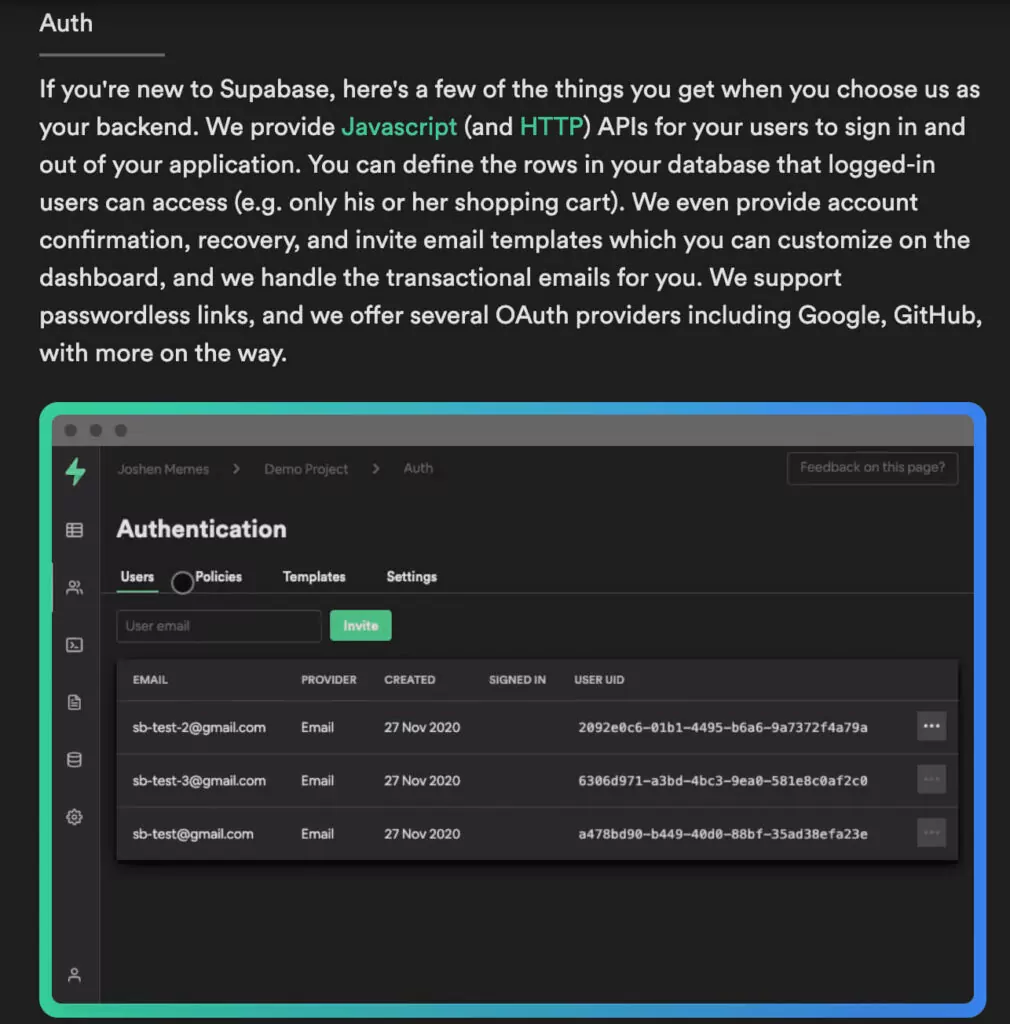Supabase, a recent Y Combinator graduate company to watch, is an open-source Firebase alternative that is quickly gaining popularity in the IT space. It is basically a suite of tools that have been stitched together to provide functionality and performance that is on par with the competition.
At the virtual Open Sauced Community event, held during Hacktoberfest in partnership with Swimm, Paul Copplestone Supabase CEO, joined to discuss Supabase and open-source solutions with Github Dev Rel Brian Douglas, sharing some tips and insight about the project and how to get started.
One prominent advantage of Supabase is its flexibility. With organizations today eager to scale up on-demand and improve their time-to-market, this open source solution answers this need without sacrificing the functionality offered by Firebase. Add in the user-friendly interface and you have a winning formula.
Note, Supabase is currently not offering all the features that you can find on Firebase, but you can definitely use it to track your database changes, query your tables, and manage your user permissions giving you enhanced visibility into your database.
Related: Infection Monkey Tutorial: Start
Contributing with Swimm
…
Supabase: how does it work?
In the talk with Brian Douglas, Dev Rel @ Github, Copplestone mentioned trying existing open-source tools wherever possible and wrapping around it the easiness that Firebase has.
Check out the entire event here.
“Supabase is an open source Firebase alternative, so we’re building the features of Firebase but we’re using open source tools. We try to use existing open source tools wherever possible. We tried to identify a nice scalable enterprise-grade open source tool for one of the features that Firebase has, and then we wrapped the easiness of Firebase around it”. // Paul Copplestone, Supabase CEO
This is most prominent in their database system which started with PostgreSQL, which is the relational database for Supabase with NoSQL.
The only thing that is not open-source so far is the dashboard. It has an air table view built on top of PostgreSQL, it has a SQL and Auto Auth.

Supabase has a feedback widget in the dashboard on the top right, when you are logged in, you can just drop a note and once you do that it is received on the Slack and you can chat with the team directly. If you have any problem, the team can debug them with you. This is a great way for Supabase to squash these bugs, have 5-9s uptime, and stay forward.
“We have actually used Supabase to build Supabase. You finding bugs is helping the platform so it is great to have the community in our corner.” // Paul Copplestone, Supabase CEO
The future of Supabase
Actually, Supabase just got to the tail-end of the Alpha working on stability and launched it’s beta version today (3 December 2020) –
After 9 months of building, 3102 databases launched, 505 issues fixed, and 238,000 lines of code written – we’re moving into Beta.
Currently focused on three parameters – Security, Reliability and Performance. Reliability especially now on APIs spent and locking down the new developer experience around the API.
“The only thing that may be called out as a caveat”, mentions Copplestone, “is that we only have JavaScript libraries so you can use every React native but you might have a hard time using it within the other mobile platforms.”
Supabase x Swimm tutorial:
Use Swimm to learn more about how to use Supabase with VUE.
Start here:
Download Swimm > install > register > enter beta password
swimm install https://github.com/swimmio/supabase-vue.git
To sum it up
Whether in Beta or alpha optimizing for project growth with a successful onboarding process can be a game changer for new users and open source contributors. Once that’s done, it becomes easier to focus on improving code quality and adding new features.
Related: Top-Down vs Bottom-Up: How to Deep
Dive Into a Codebase
